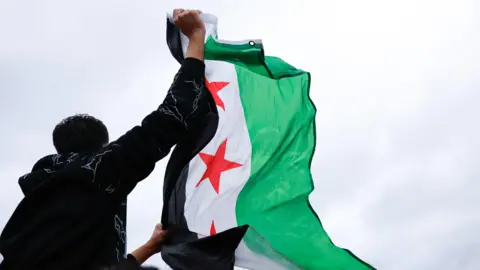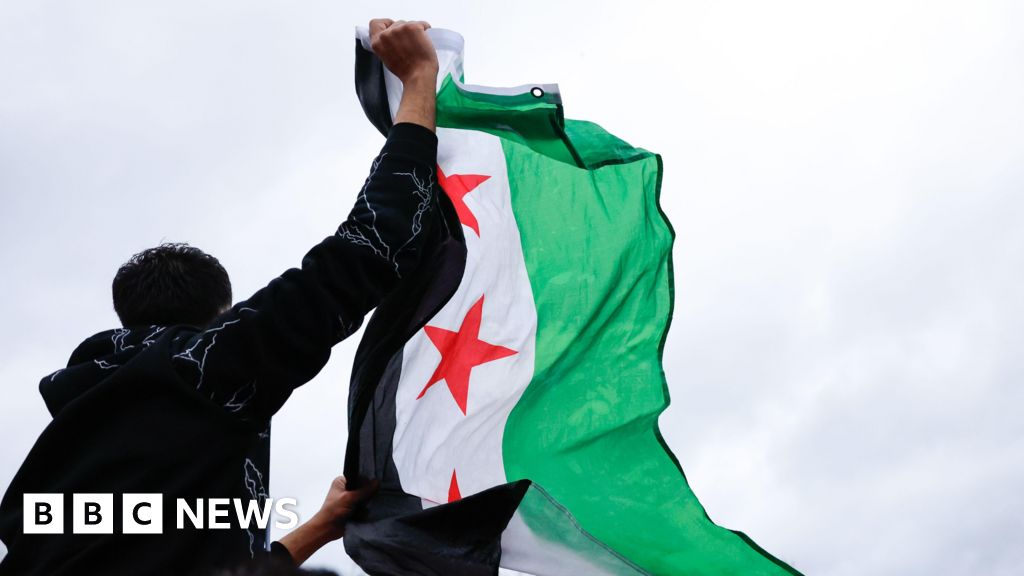 EPA
EPAA stunning advance by Syrian rebels has ended Bashar al-Assad’s 24-year rule, with rebels taking over the capital and forcing the president to flee on December 8th.
The overthrow came after a 13-year civil war that began after Assad crushed a pro-democracy movement. The fighting killed more than 500,000 people, displaced millions more, and involved international forces and their proxies.
The world is now watching to see what form Syria’s political situation will take after the end of the Assad family’s half-century rule.
Countries with vested interests in the conflict and the country’s future include Russia and Iran, which supported President Assad, on the one hand, and the United States and Turkey, which supported various rebel groups and militias, on the other.
Here we explore how these countries, along with Israel, have played a role in Syria and are likely to continue to do so.
turkey
During the Syrian civil war, Turkey has supported the rebels, most of whom are currently fighting under the banner of the Syrian National Army (SNA), by providing arms, military and political support.
Syria’s northern neighbor is primarily concerned about the use of rebel forces to contain the Kurdish YPG militia, and Turkey is concerned about the militia’s involvement in the banned Kurdish rebel group PKK. They denounce it as an extension. Turkey also wants the approximately 3 million Syrian refugees living in the country to return home.
The YPG is the largest militia of the US-backed, Kurdish-led Syrian Democratic Forces (SDF) coalition, which controls much of the country’s northeast.
During the war, the SDF largely avoided conflict with Assad’s forces. However, Turkish forces and rebels have captured large swathes of territory along Syria’s northern border from the YPG and SDF.
Türkiye is also politically involved. In 2020, Turkey and Russia brokered a ceasefire to halt government efforts to retake Idlib, a rebel stronghold in the northwest.
Idlib is controlled by the Islamic extremist group Hayat Tahrir al-Sham (HTS), which led the rebel group that ultimately overthrew Assad’s regime.
Many believe that the attack could not have happened without Türkiye’s blessing. Turkey denies supporting HTS.
Meanwhile, conflict continues in northern Syria. At the same time as the HTS launched its attack, the SNA launched another attack against SDF-held areas.
Russia
Russia already has a decades-long relationship with the Assad regime and had military bases there even before the civil war.
Russian President Vladimir Putin used his country’s presence in Syria and support for Assad to challenge Western power and control in the region.
In 2015, Russia launched an air campaign to support the Assad regime, sending thousands of troops.
In return, Russia received a 49-year lease on air and naval bases, making it an important hub in the eastern Mediterranean for shipping military contractors to and from Africa.
This was an important step in Russia’s attempt to assert itself as a world power, which had previously focused on countries in the Soviet bloc.
But Assad’s allies were preoccupied with the war in Ukraine, which began in 2022 and contributed to the Syrian army’s swift defeat at the hands of the rebels in late November and early December.
According to Russian media, Assad and his family were granted asylum in Moscow after fleeing Damascus.
us
After pro-democracy protests in Syria were suppressed by force in 2011, then-US President Barack Obama supported forces opposed to Assad’s regime.
The United States intervened militarily in 2014 to fight the Islamic State (IS), providing military support to groups it considers to be moderate rebels.
The US-led global coalition has carried out airstrikes and sent special forces to help the Kurdish-led SDF coalition seize territory in the northeast previously held by IS.
After the fall of Assad’s regime, the US government announced that it had carried out dozens of airstrikes against IS camps and operatives in central Syria to prevent IS from taking advantage of the unstable situation.
President-elect Donald Trump, who takes office in January, has said Syria is a “mess” that the United States should not get involved with. When Trump was president in 2019, he ordered the withdrawal of U.S. troops from Syria, but officials gradually reversed the move.
The United States currently has about 900 troops stationed in the northeast, mainly in Syria.
Iran
Iran and Syria have been allies since the Iranian Islamic Revolution in 1979, and Syria supported Iran during the Iran-Iraq War in the 1980s.
During the Syrian civil war, Iran is believed to have sent hundreds of troops and spent billions of dollars supporting Assad.
Thousands of Shiite Muslim fighters armed, trained and financed by Iran (mainly from the Lebanon-based Hezbollah movement, but also from Iraq, Afghanistan and Yemen) are also joining the Syrian army. I’ve been fighting.
But like Russia and Ukraine, Hezbollah has also been weakened by the conflict with Israel in Lebanon, likely hastening the collapse of the Syrian army.
Israel
Israel captured the Golan Islands from Syria at the end of the 1967 Six-Day War and unilaterally annexed it in 1981. The United States unilaterally annexed it in 2019, although the move was not internationally recognized.
Israel has conducted hundreds of airstrikes against Iranian-linked targets in Syria during the war, but has rarely acknowledged such strikes.
Israel has carried out hundreds of attacks across Syria since rebels overthrew Assad. Targets include Syria’s military infrastructure, naval fleet, and weapons production facilities.
Israel said it was acting to prevent weapons “from falling into the hands of extremists.”
Israeli forces also occupied the demilitarized buffer zone in the Golan Heights. Israel said its 1974 military disengagement agreement with Syria had “broken down” with the rebel takeover of the country.
He acknowledged that the country’s forces were operating in “several further locations” in Syria beyond the buffer zone, but insisted they were “not advancing towards Damascus.”




